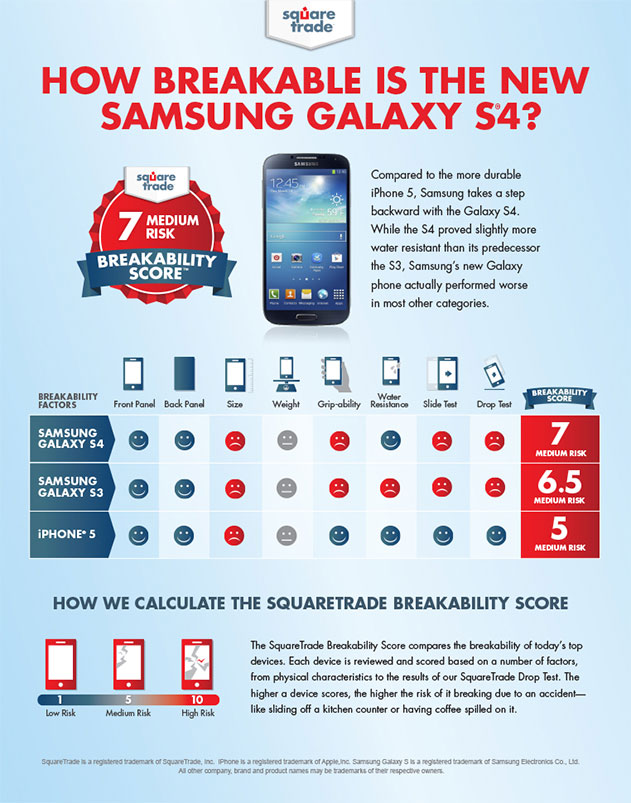Samsung Galaxy S4 easier to break than its predecessor and Apple iPhone 5
If you want to buy a Galaxy S4 and are a clumsy person then you might want to invest in an aftermarket case (or rethink your decision). According to SquareTrade, a company that provides protection plans, Samsung's latest Android flagship smartphone is easy to break, more so than the Galaxy S3 and the Apple iPhone 5.
SquareTrade pits the three smartphones against each other in eight key areas including front panel protection, grip, water resistance and drops. The Galaxy S4 scored badly in the slide and drop tests, grip-ability and size, giving it the highest breakability mark of seven out of 10 (lowest scores are best).
http://youtu.be/kjE__rr7J1s
By contrast, its older brother, the Galaxy S3, managed to post a breakability score of 6.5 out of 10 while the iPhone 5 took the crown with the lowest mark of the three -- five out of 10. So what led SquareTrade to this conclusion?
The test blames the Galaxy S4's case, which does not protect the smartphone well enough against drops, the slippery back panel and the size of the case itself, which is too wide for a safe grip "especially" when the device is up against Apple's narrow iPhone 5.
SquareTrade also says that the display on the Galaxy S3, which is protected by Gorilla Glass 2, fares better than the panel on the Galaxy S4, which comes with Gorilla Glass 3 -- supposedly more durable than its predecessor. The Galaxy S3, however, is not as water resistant as its successor.
"Due to more breakable surface area" the iPhone 5 lost some points as well, but Apple's smartphone is easier to hold (no surprise there). SquareTrade also says that the iPhone 5 has a lower friction coefficient which comes out as a rather contradictory statement when the video clearly shows that the handset slid for the shortest distance. It would, logically, be correct to say that it has the highest friction coefficient of the three.
SquareTrade crowns the iPhone 5 as the winner of this comparison, but your experience may vary depending on many factors such as the height and the angle of the drop, the type of surface on which the device falls, etc.

